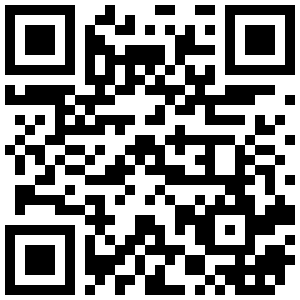Bicycling is a popular activity in Utah. Riders use their bikes as a method of transportation to work or school, or even just to take in the beautiful scenery and canyons the state has to offer. Unfortunately, the number of bicyclists getting injured or even killed in accidents involving motor vehicles has increased in recent years.
Bicyclists riding on public roadways are generally required to follow many of the same traffic laws as other types of vehicles. However, there are some additional requirements, both from bicyclists and motorists, that are intended to keep riders safe. Here is a look at four important bicycle safety laws in Utah.
Riders Must Ride the Same Direction as Traffic on the Far Right
Riders and motorists are often confused as to where the proper place for bicycles is on the roadway. Are riders supposed to ride on the sidewalk, opposing traffic like pedestrians, or should they ride on the roadway like motor vehicles? As it turns out, bicycles should be ridden on the roadway, preferably in a bicycle lane on the right edge of the road.
If there is not a bike lane provided, the rider should operate their bicycle as close to the edge as possible, except when passing another bike or vehicle, traveling straight through an intersection when there is a right turn lane, or when preparing to turn left. Riders are also permitted to stray from the right edge of the road if there is a hazard in that area of the road that they need to avoid.
Bicyclists Must Make Themselves as Visible as Possible
Slightly more than half of all bicycle accidents occur during the hours of darkness, between 6 PM – 6 AM. Often, these accidents are caused by a driver failing to yield the right-of-way for the bicyclist. There are many reasons for this, including the driver not being able to see the rider. Bicyclists in Utah are required to have a white headlight, red tail light or reflector, and side reflectors to operate on the state’s roads anytime they ride, from a half hour before sunset to a half hour after sunrise. These lights or reflectors can be affixed to the bike or the rider, but they must be visible from 500 feet away.
Riders are at risk of a driver not being able to see them not only due to darkness and the slimmer, less-lit frame of the vehicle compared to cars and trucks, but also because of negligent driving behaviors such as distracted driving or alcohol impairment.
Riders are encouraged to ride defensively, looking out not only for hazards on the roadway itself, but also hazards being presented by other drivers, while keeping their own distractions to a minimum and avoiding riding when alcohol impaired, as impairment creates deficits to the skills that both drivers and riders need to safely navigate Utah’s streets.
Motorists Must Provide Three Feet of Space
Bicycle safety is not solely the responsibility of the rider. Motorists in Utah are also required to take certain actions to ensure bicyclist safety, including providing at least 3 feet of space when passing the rider on the road. This space is intended to be a buffer between the motor vehicle and the more vulnerable bicycle in order to prevent drivers from sideswiping riders or riders from getting into an accident while attempting to avoid being struck by a vehicle.
Utah’s traffic laws prohibit motorists from intentionally trying to distract a bicyclist in order to make them wreck or cause them to run off the roadway. Motorists are also required when parking on the side of the road to ensure there is no traffic approaching—including bicycle traffic—before opening their door into a bicycle lane or travel lane.
Dooring accidents are a common type of bicycle accident, and they occur when the occupant of a vehicle opens the door into a bicyclist’s path, forcing the rider to either collide with the door or swerve into an adjacent travel lane.
Riders Must Signal Their Intention When Turning
Just as the drivers of motor vehicles are required to communicate their intentions to other drivers by using turn signals, bicyclists must also signal when they are turning left, right, or changing lanes. These are the signals that riders are required to use:
- Left turn: The rider fully extends their left arm out to the side
- Right turn: The rider either fully extends their right arm out to the side, or bends their left arm up at a right angle with their hand flat
- Slowing or stopping: The rider extends their left arm and hand downward
Riders have an additional option when making a left turn to use the left turn lane as other vehicles do. Riders are not required to continuously signal, as having both hands on the handlebars is an important component to riding safely.
Bicyclists are required to yield to other roadway users when legally required according to traffic lights and signals. Riders must always yield to pedestrians and produce an audible sound when coming up behind them to overtake them.
Contact Feller & Wendt if You’ve Been Injured in a Bicycle Accident
Bicycling is an affordable and exhilarating way to experience the cities and countrysides of Utah. However, the vulnerability of the bicycle when sharing roadways with much larger, heavier, and faster-moving vehicles leaves many individuals injured. If you’ve been injured in an accident that was caused by a negligent driver, you can seek compensation for the expenses and impacts of your injury by filing a personal injury claim against the at-fault driver’s auto liability policy. If the insurance provider fails to pay the claim, it can be filed as a personal injury lawsuit.
The experienced legal team at Feller & Wendt can help you understand Utah’s personal injury claims process and the importance of having an experienced lawyer to assist you with your claim. For your free case evaluation, contact us online or by calling (801) 499-5060.
